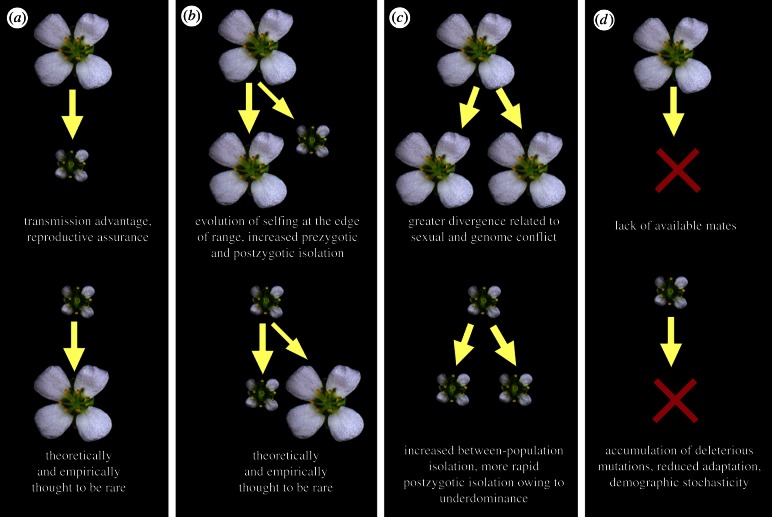Figure 1.
Processes affecting macroevolutionary diversification of outcrossers (top panel) and selfers (bottom panel), and factors that may enhance rates of transition. (a) Transitions from outcrossing to selfing are thought to be common, while the reverse is rare. (b) Selfing may often evolve as a speciation process, where the ancestral outcrossing lineage persists. (c) Speciation rates within outcrossers can be enhanced by higher rates of sexual and genomic conflicts, whereas selfers may experience accelerated rates of speciation owing to greater mating isolation and more rapid post-zygotic isolation owing to underdominant alleles. (d) Extinction rates in outcrossers can be enhanced by the lack of available mates, whereas extinction rates in selfers may be increased by reduced adaptive potential and by the accumulation of deleterious mutations.

